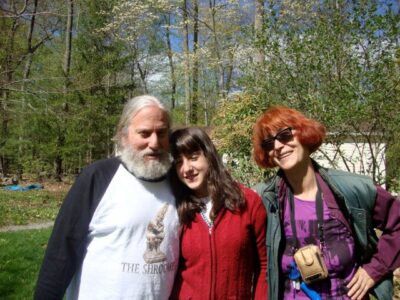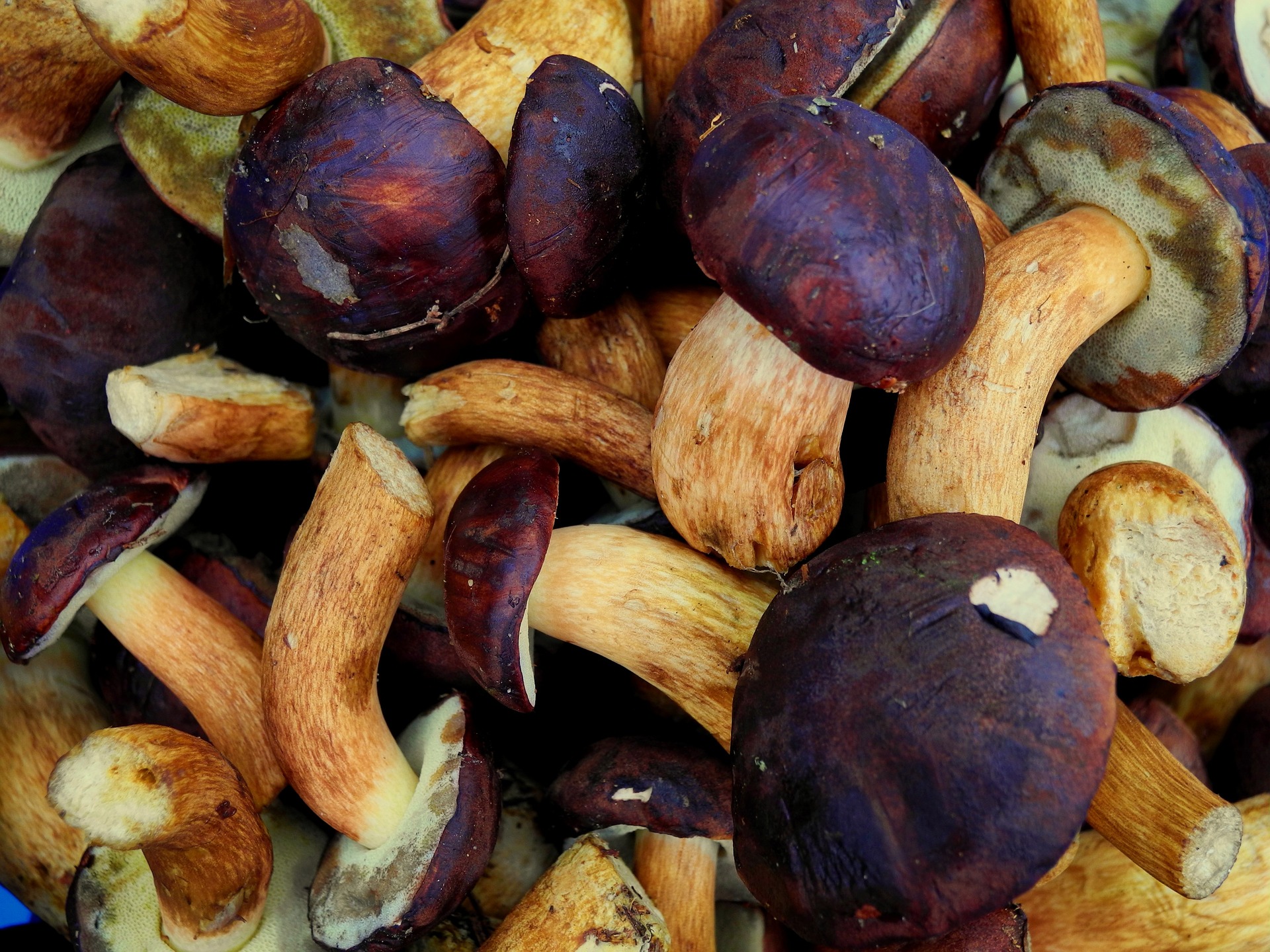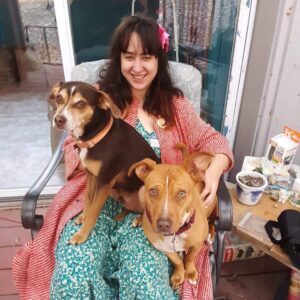A few months ago, I succumbed to the temptation of a clickbait article involving a hidden obscenity in an episode of a popular children’s show. The show was Maya the Bee, an animated series about a mop-topped bee who navigates the world of bugs with her insect friends. Scandal aside, I became engrossed in the episode in question, the plot of which taught me about something I’d never heard of before—honeydew. Honeydew is a sticky, sugary sap excreted by aphids, which is consumed by other insects such as ants, who engage in a symbiotic relationship with the aphids based on this need.
Later, in a very separate context, I was reading about manna, the heavenly substance which God provided to the Israelites for sustenance throughout their 40 year travels through the desert following the exodus. While manna does not necessarily have one fully agreed upon counterpart in a contemporary earthly setting, a common interpretation is that manna was a sort of honeydew.
The Jews of the Book of Exodus were essentially foragers, relying on edible offerings of the land for sustenance. Unlike agriculture, foraging forms a relationship with the land that is spontaneous, place-based, sensitive to change, and somewhat ephemeral in its nature, perfectly suited for the persons on the (big) move. My interest in foraging grew organically from the influence of my parents, two Jews from New York City and Romania respectively, who first met at a meeting of the New York Mycological Society, a non-profit organization dedicated to stoking public interest in the world of wild mushrooms through things like guided walks, lectures, and banquets.
In March, I returned to visit my parents in New York City for the first time after moving to Brattleboro, Vermont, my first major transition towards independence since I had left for college. I sat on my bed in the room I’d shared with my mother in our one-bedroom apartment from childhood to the age of 18, my parents sitting opposite to me on her bed. My mother, Leah Faerstein, reflected on her Jewish identity growing up in Romania, and her surprise and amusement at meeting my father through foraging.
“I remember when I lived in Romania, our whole family was assimilated. There was nothing about being Jewish—I mean I didn’t even know I was Jewish until I turned 18. And after I found out, nothing much changed in my life. All my generation—cousins, sister, brother, they all married non-Jewish. So at some point when I came here, and after my divorce, I kind of had this idea, once I joined the mycological club I had this idea that maybe I meet someone, on those foraging trips. Which I did! And then I said ‘oh lo and behold, out of all my generation in Romania, I am the only one who married a Jew! And found him in the woods!?”

For my mother, the decision to join the New York Mycological Society was part of an effort to reintegrate herself into the world after a very difficult period of depression and isolation following her divorce. She was pinpointing things that had brought her happiness in a past life—literature, science fiction, picking mushrooms in the Romanian countryside—and using them to make her way back into her current life. While my mother does not see her own life as having changed much through the realization of her own jewishness, my family’s life has been quite profoundly shaped by their being Jewish; their intentional assimilation and obscurance of their full identities was a direct result of the antisemitism they faced in their country. Knowing all this, it feels particularly significant to me that she met my Jewish father through the intentional recovery of another distant fragment of her identity.
My father, Victor Weiss, is a passionate forager of plants, fruits and mushrooms. Like myself, he was born and raised in New York City, and his urban foraging practices expose a side of the city that is often unnoticed or obscured. His interest in foraging grew alongside his dietary restrictions—he maintains a vegan diet and also abstains from processed sugar and gluten. Although he does not keep kosher, he commented that, were he to do so, he would be all set with his foraged greens.
When asked about connections between his foraging and his Jewish identity, my father mentioned applications for Passover. “When I’ve gone to a seder or two, I find some garlic mustard and I say ‘here’s some bitter herbs.’” I am particularly fond of this anecdote when I consider the array of modifications and additions that many Jewish people have made to the seder plate—based on availability, symbolisms, and personal values and expressions. My own plate this year, shared with a very small group of close friends, included candied orange slices for the LGBTQ+ community, a pinecone for the incarcerated, and a key for the homeless and housing insecure. To me, replacing horseradish from the grocery store with a sprig of a native wild edible found in a neighborhood park is an intermingling of spirituality and close relationship to an ever-changing landscape reminiscent of the Jews of Exodus and their gathering of Manna.
My father also discussed the caution exercised by some orthodox Jews to avoid the consumption of insects. “Some people that are very religious seem to be concerned with—of critters being in their vegetables and stuff. And I had a friend who was not that religious, but her son became orthodox, and he and his family won’t eat lettuce [because of bugs].” He referred lightly to his own caution which he executes to remove any insects from freshly foraged goods as opposed to some in the foraging community who will jokingly refer to the occasional stray critter as “a little extra

protein”, musing on whether a latent Jewish instinct guides his habits.
I spoke with Steve Brill, another Jewish New Yorker, who makes a living leading tours and educating children and adults about the world of wild edibles, often with the assistance of his teenage daughter, Violet Brill. When asked about connections he perceives between his foraging practices and Judaism, Brill spoke of an ethic within Jewish tradition which overlaps with his philosophy behind foraging and environmental education, regarding our responsibility towards the natural world. “We are supposed to take care of the earth, but a lot of other traditions have the same ethic,” he said. “I don’t know if you’d call that Jewish or universal.” After speaking about this more, we settled on “a non-uniquely Jewish ethic,” as a descriptor.
I also spoke with Chelsea Taxman, an herbalist whose Jewish identity actively informs her practice. The work of an herbalist overlaps with foraging, sharing an intimate relationship with natural ecosystems in all their specificities. Taxman identifies on her website as “a healer & plant medicine maker working toward liberation. Empowering us to take back our power in health in the home and as sacred practice,” informed by her Ashkenazi Jewish ancestors. Taxman offers personal consultations and a variety of services for those interested in healing herbalism, and maintains a commitment towards providing accessible services for those who may otherwise face difficulties in accessing care within conventional and alternative medical services, including people of color, queer, and low income people.
In our conversation, Taxman spoke about discovering herbalism as a teenager as an empowering means of treating and healing her own problems, later considering herself to be part of a larger community and tradition of Jewish healers (or, as someone she participated in a workshop with playfully put it, “plant yentas”). “My own personal practice was just like, using herbs and thinking about herbs for myself for many years….I started making everything for myself. I found a remedy by myself for stomach aches, I found a remedy by myself for acne.”
For Taxman, this already empowering practice was enriched and expanded when she began to share it with somebody outside of herself. “I had this friend come to me and she was like ‘I also love doing that! And then we started experimenting like, going a little deeper, trying things I wouldn’t necessarily have tried on my own. We made a personal lubricant that we could use, a deodorant…kind of looking at the products we purchase and studying the plants together. That was really fun. Kind of like, in chavruta. She wasn’t Jewish but I think about how valuable that practice is of studying with somebody.”
Derived from the Aramaic word meaning “friendship” or “companionship,” being in chavruta refers to the Rabbinic Jewish tradition of studying the Talmud with a partner, a practice considered superior to studying alone. It is notably different from a teacher-student learning model, in that it is non-hierarchical and dependent on two individuals with a similar level of skill gaining knowledge through a mutual exchange of ideas. The bond of chevruta is generally considered to be a very deep and lasting one. Taxman’s chavruta with another herbalist was an important point in her journey from herbalism as a purely personal practice to one that spread outwards in many directions, including into own ancestral past as a Jew.
She reflected on the ways in which connecting to her Jewish ancestry has allowed her to access a deeper level of meaning and fulfillment in her work as an herbalist.
“Since I’ve leaned into the reality that I am Jewish, and I have these Jewish ancestors and this Jewish lineage and I have this Jewish inherited knowledge that I have to uncover because it wasn’t written down or it was erased…since I’ve just allowed myself to be open to that knowledge, so many things feel like they’ve opened up. My heart feels more open to this work and to community and to people.”
Taxman spoke on how the introduction of a Jewish spirituality has changed the nature of her work. “I’ve found meaningful work as an herbalist. Before, some of my work felt more capitalistic, where I was like making products and selling it at the farmers market, and creating a workshop and promoting it and marketing it and selling and selling….It took out some of the heart of it sometimes, when I was like, scrambling to find the right packaging. And since I’ve asked my Jewish ancestors for support, I’ve enjoyed more of the process.”
A year or so after their first meeting in the woods of New York City, my parents strapped their months-old baby into a sea-green and purple baby character that, many years later, will be used to carry our little dog through subways and buses so that she too can enjoy family foraging trips, dashing through fields and sniffing at soil and rolling in mud. This summertime walk produces a giant puffball mushroom, and a family photo of my tiny baby hand against the comically large fleshy white orb of fungus, mouth agape.
It goes without saying that Jewish identity is multitudinous and complex. For many who are assimilated or who go through significant changes in these identities, the process of coming to these identities may involve a sort of “going back” or returning, even if what one is returning to is not something one has experienced within their lifetime. I see foraging and herbalism similarly—while a newcomer to these practices may have never before cut through the stalk of a bolete mushroom with a pocket knife or harvested St John’s wort to help treat their depression, in doing so they are returning to a time of a more intimate communion with the Earth, a time when Jews survived their long voyage through the desert by gathering the land’s sacred food, sent by God.
Maya Faestein-Weiss was a 2021 Resilient Writing Fellow with New Voices and the Institute for Jewish Spirituality.

